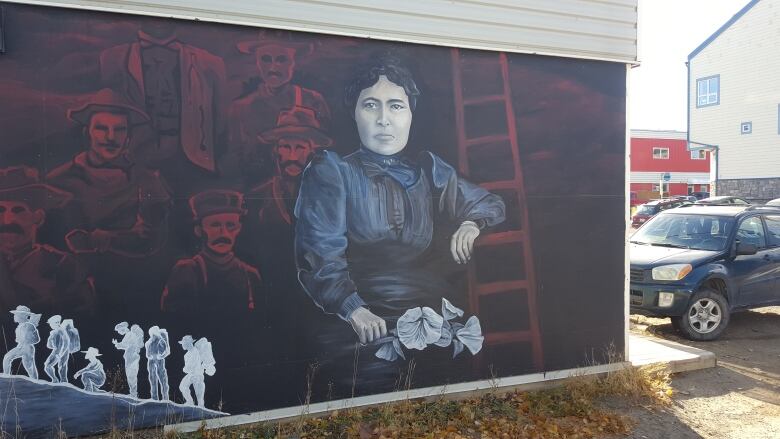Kate Carmack gets her due with mining hall of fame induction
Yukon Indigenous woman was there when gold was first discovered in the Klondike in 1896

Kate Carmack, the Indigenous Yukon woman who played a significantrole in the discovery of gold in the Klondike more than a century ago, will finally take her place in Canada's Mining Hall of Fame.
Her induction comes two decades after four men including her husband, brother and nephew were added to the hall of fameand credited as the "Klondike discoverers" who first foundgold in Bonanza Creek in 1896, andultimately sparked a gold rush.
"If you go into the history of the reporting of the Gold Rush, of course you find it heavily centred on the men who were involved," said Jon Baird, chair of the Canadian Mining Hall of Fame.
"We've now placed [Kate Carmack] due to new information that's come to our attention, anyway we've placed her at the scene of the crime, and we want to give her her due recognition."
That new informationcame to lightin Wealth Woman: Kate Carmackand the Klondike Race for Gold,a 2016 book by U.S. writer DebVanasse.
In the classic discovery story, Carmack'shusband George Carmack, her brother Skookum Jim, and nephew Dawson Charlie find gold at Bonanza Creek after getting a tip from prospector Robert Henderson.

Vanasse's research told her that Kate Carmack a member of the TagishFirst Nation was therewhen that firstnugget was actually pulled from the creek, and so deserves equalcredit.
"One of the main reasons I wanted to do the book was to really set the record straight," Vanassesaid.
'Instrumental' in Klondike discovery
"I think of Kate, in terms of mining, the way we look at all the support people who surround mining, even today the engineers, the people who help with the processes it's not just who found the particular mineral that's being brought from the ground, it's all the people who make that happen. And that's the role she played,"Vanassesaid.
Baird agrees, saying that even though no claim was ever staked in Kate Carmack'sname, she was "instrumental" in the Klondike discovery. She supported the prospecting party by sewing and selling mukluks and mittens, and her traditional knowledge and skills helped the group to live off the land.
"George Carmack was really just a part-time prospector who drifted up from California, got really sick, and Kate saved his life, if you will, by nursing him," Baird said.
"In the fullness of time, there will be more and more women who are inducted."

With files from Tara McCarthy












_(720p).jpg)


 OFFICIAL HD MUSIC VIDEO.jpg)
.jpg)



























































































